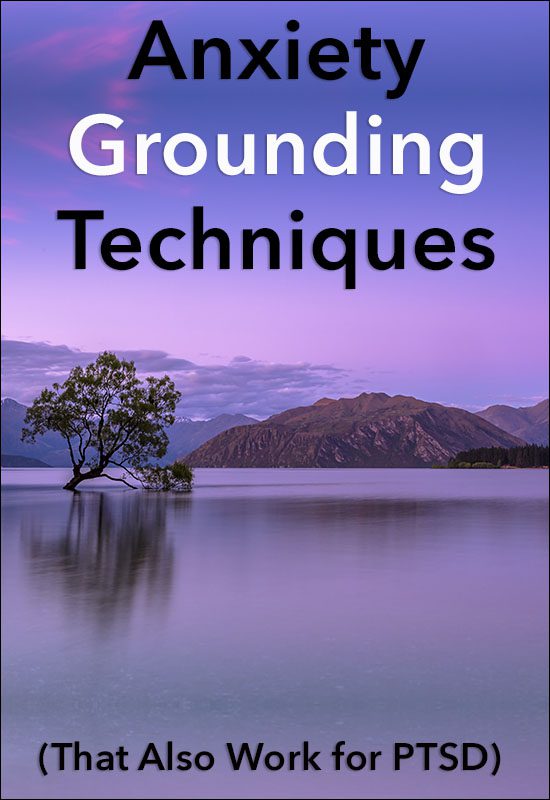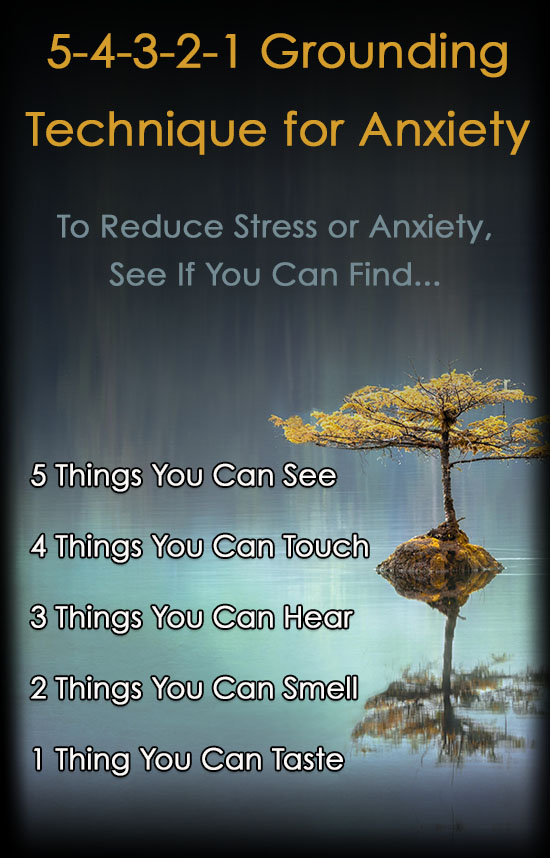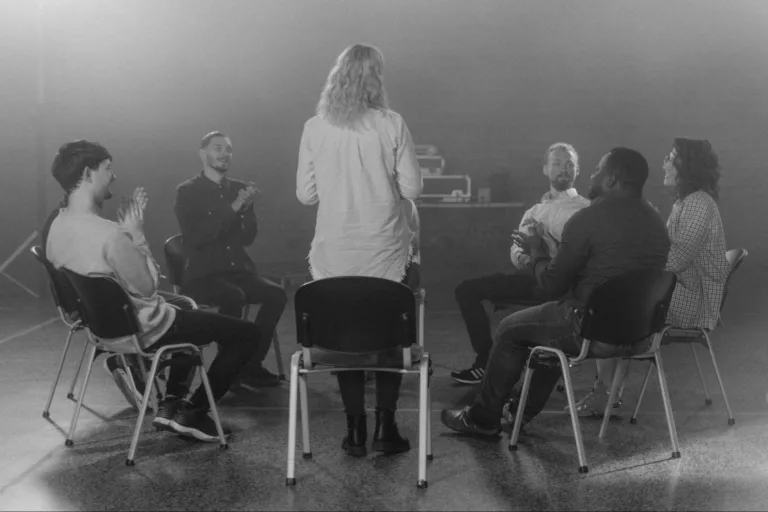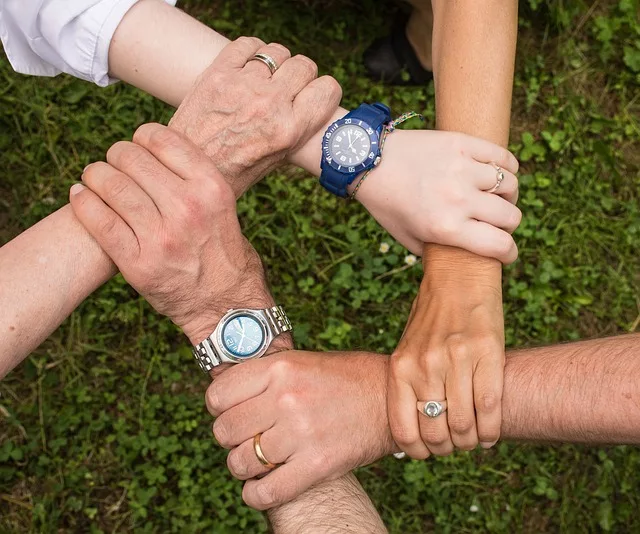Living with a mental illness can mean a lot of stress and anxiety on a daily basis. So much so that it can be debilitating and create serious quality-of-life issues. In order to overcome worry, stress, and to clear the mind, it’s important to have a toolbox of anxiety grounding techniques and exercises at your disposal.
Whether they are physical or mental, anxiety grounding techniques are designed to divert focus away from whatever issues are causing stress and replace them with a sense of balanced calm.
Nearly 47 million people in the United States struggle with mental illness of some kind, according to the National Institute of Mental Health (NAMI). Conditions like depression, anxiety, bipolar disorder and others are far more common than many people realize.
Statistics from the National Center for PTSD show that an estimated 8 million people deal with Post-Traumatic Stress Disorder (PTSD) symptoms each year.
Even for those who don’t endure with mental health issues, everyone can take advantage of grounding exercises for anxiety because we all experience stress, fear and worry from time to time.
Why are Grounding Exercises for Anxiety Useful?
Stressful or traumatic thoughts, feelings, and memories can trigger the amygdala, the part of the brain associated with an emotional response. A fear response can cause the amygdala to flood the brain and body with adrenaline.
This is often referred to as the “fight or flight” response, which can cause a rapid heartbeat and breathing, tremors, dilated pupils, and pale or flush skin among other symptoms.
In a very real sense, our brain is preparing our body for an incoming emergency, which is very useful in times of physical danger.
However, it can be incredibly counterproductive and incapacitating when the reality of the situation does not match our mind’s panicked response.
In the case of PTSD, a person reliving or remembering an incredibly traumatic event may physically experience the very panicked response that the original trauma created even though the trauma occurred weeks, months or many years earlier.
Grounding exercises for anxiety can help lessen or alleviate a perceived threat that’s triggered the “fight or flight” response and bring our mind and body back to a more functional state of being.
There are two types of grounding methods, physical exercises, and mental exercises.
4 Physical Grounding Techniques for Anxiety
These approaches use physical stimulation to decrease the body’s response to anxiety. Because there are variations of these exercises, it’s important that people learn and employ the techniques that work the best for them.
1. Breathing Techniques for Anxiety Grounding
Slowing the breath will help lower the heart rate and counteract the amygdala’s response.
Sit or stand still for a moment and inhale through the nose for a short count, making sure to expand your chest with air, and then slowly exhale for a similar count.
While doing this, focus all attention on breathing and clear the mind of everything else.
Repeat until you feel panic symptoms subside.
2. Cold Water
A quick way to divert attention from stressful or traumatic thoughts causing anxiety is to place your hand under cold running water or into a bowl of ice and water.
Both the brain and the body will be forced to address the drop in temperature on the skin and divert focus from some of the panic.
This acts as an effective mental diversion that forces the mind to focus on a physical element instead of an emotional one.
3. Touch, Squeeze and Focus
Place something in your hand. It can be anything nearby or a special item used especially for grounding.
How does it feel in your hand – its texture, its temperature, its weight?
Perhaps you can close your eyes and, from the feel of the object, create an image of it in your mind. Objects with unique physical attributes sometimes work best.
Focusing on something outside of the body can be incredibly useful for grounding.
4. Exercise
Regular exercise is an excellent way to manage mental health, but it can also be a grounding technique during a time of worry, stress or concern.
For some people, a brisk walk around the block might relieve excess energy from adrenaline.
Others may find they need to up the intensity with a run or even something like dancing to loud music.
Whatever the outlet, exercise is a great way to get or stay grounded.
3 Mental Grounding Exercises for Anxiety
Mental grounding exercises can easily be paired with physical grounding techniques or done on their own.
Mental grounding exercises can include some of the following:
1. Meditation
There are many ways to practice meditation to quiet the mind, but the easiest is to find a quiet spot to sit down, close your eyes and work on quieting your mind, Don’t focus on any one thought, but instead, let thoughts come and go.
Imagine a peaceful scenario, a hike in the woods, a breeze moving through treetops and allow your body and mind to rest.
If you find your mind wandering to the cause of your stress or anxiety, simply recognize it and gently return back to something neutral, like focusing on breathing or the hike in the woods.
Meditation is an excellent practice to do daily as a way to stay grounded and as a method for immediately calming the mind.
2. Mindfulness
Mindfulness is the practice of living in the present moment and focusing on whatever is happening right then.
For example, a mindful walk may include how the air feels on your face, the way your feet feel in the shoes, and whether the moment is filled with silence or noise, wind or stillness.
Mindfulness takes focus away from the worry and fear of the past or present and helps us ground ourselves in the present moment.
3. The 5-4-3-2-1 Grounding Exercise for Anxiety
The 5-4-3-2-1 Grounding Technique for Anxiety can be very effective for grounding during an especially stressful moment.
If possible, take a seat, close your eyes and take several deep breaths.
Then, open your eyes and say out loud 5 different things you see in the space.
Next, find 4 separate things you can touch, from your skin to your clothes, maybe the seat you’re in or a nearby book. Anything counts.
The next step is to focus on 3 things you can hear, birds, kids playing outside, distant music perhaps or the sound of traffic.
Then employ smell by attempting to differentiate between 2 different smells or scents in the space.
Lastly, is there 1 thing you can taste? Maybe you chew a piece of gum and think about its flavor or a piece of candy. Any food item can work.
If you notice the steps from 5 things see to 1 thing to taste, they seem to get harder as they get closer to the last one.
This is intentional because it engages the mind as the exercise progresses and diverts attention away from the cause of stress or anxiety. It’s quite easy to find dozens of things to see, but much more difficult to find more than one thing to taste.
Because June is PTSD Awareness Month, take the time to learn and practice some anxiety grounding techniques so they will become second nature when you really need them.
Any of these techniques or exercises can be modified, and some of them work well together. Try them all to see which ones work best for you and share them with others who may have issues with overcoming stress or anxiety.
Related:
10 Films About Post-Traumatic Stress Disorder (PTSD)
What is a Substance Induced Mood Disorder?







